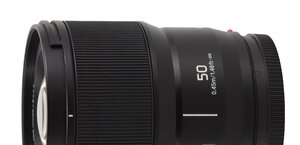Sigma 120-300 mm f/2.8 APO EX DG OS HSM
4. Image resolution
Let’s check how the tested Sigma fares in the frame centre. The results we got at 120, 200 and 300 mm are presented below; we also added the performance after attaching the tested lens to the original Sigma APO 1.4x EX DG (420 mm) teleconverter.

Please Support UsIf you enjoy our reviews and articles, and you want us to continue our work please, support our website by donating through PayPal. The funds are going to be used for paying our editorial team, renting servers, and equipping our testing studio; only that way we will be able to continue providing you interesting content for free. |
- - - - - - - - - - - - - - - - - - - - - - - - - - - - - - - - - - - - - - - - - - - - - - - -
Immediately you can notice an almost perfectly even performance of the Sigma at all focal lengths. If you take into account measurement errors, it will be difficult to differentiate particular focal lengths’ values. It should be also emphasized that the results of the tested lens are excellent. Already at the maximum relative aperture you get values near 38 lpmm and on stopping down the aperture by 1-2 EV you reach 42-43 lpmm. For a zoom telephoto device this performance is very good – really beyond reproach. It is true that the values we see here are still by 2-3 lpmm lower than those of the fixed-focal Canon 2.8/300 IS but the difference is so insignificant that it would be difficult to notice it in real life photos. In the frame centre the Sigma zoom lens, tested here, is able to compete on equal terms with much more expensive fixed-focus devices, produced by the competitors. Of course the advantage of the primes can be felt on the edge of the frame but before we get there let’s discuss the performance of the Sigma attached to the teleconverter.
It is clear that those results are noticeably different than those seen in the 120-300 mm range. First of all at the maximum relative aperture (now amounting to f/4.0) the images are delicately fuzzy – a characteristic trait of badly corrected spherical aberration and other off-axis aberrations like coma and astigmatism. Fortunately the stopping down helps a lot – it’s enough you close the aperture by about 2/3 EV and the images become useful. You can’t have any reservations about the photos taken near f/6.3
Let’s check how the Sigma fares on the edge of the smaller APS-C/DX sensor.

Once again there are no reservations whatsoever when it comes to the performance without the converter. Even at the maximum relative aperture the results are close to our decency level and on stopping down to 1-2 EV you get very nice, sharp photos. The problems start after attaching the converter, though. Its small dimensions and elements noticeably limit such a fast telephoto lens as the one tested here so the edges of the frame lose a lot of brightness. If you want to use the Sigma converter and enjoy high resolution images even on the edge of the APS-C/DX sensor, you will have to stop the aperture down to near f/8.0.
Let’s glance at the performance on the edge of full frame.

Here the weaknesses of a zoom lens are really conspicuous, especially when compared to the brand name primes of the 2.8/300 class. The image is never fully useful – neither at the maximum relative aperture nor at any focal length; you can reach full usefulness only on stopping down to near f/5.6. The performance with the teleconverter is even worse – even a significant stopping down doesn’t allow you to get a good quality image. As a kind of consolation we should add that you use a teleconverter to bring the photographed object as close as it is possible. In such situations you often additionally crop the frame removing the edges; in such a situation the weak performance on the edge of full frame, caused by the teleconverter, doesn’t have to be such a big problem.
The crops below were taken from JPEG photos and saved along RAW files, which were used to the analysis, presented above. Two first crops come from the area near the frame centre and the last one – from the very corner of our testing chart. It shows how weak the tested lens fares there when it is joined with the original Sigma teleconverter.
 |
 |






